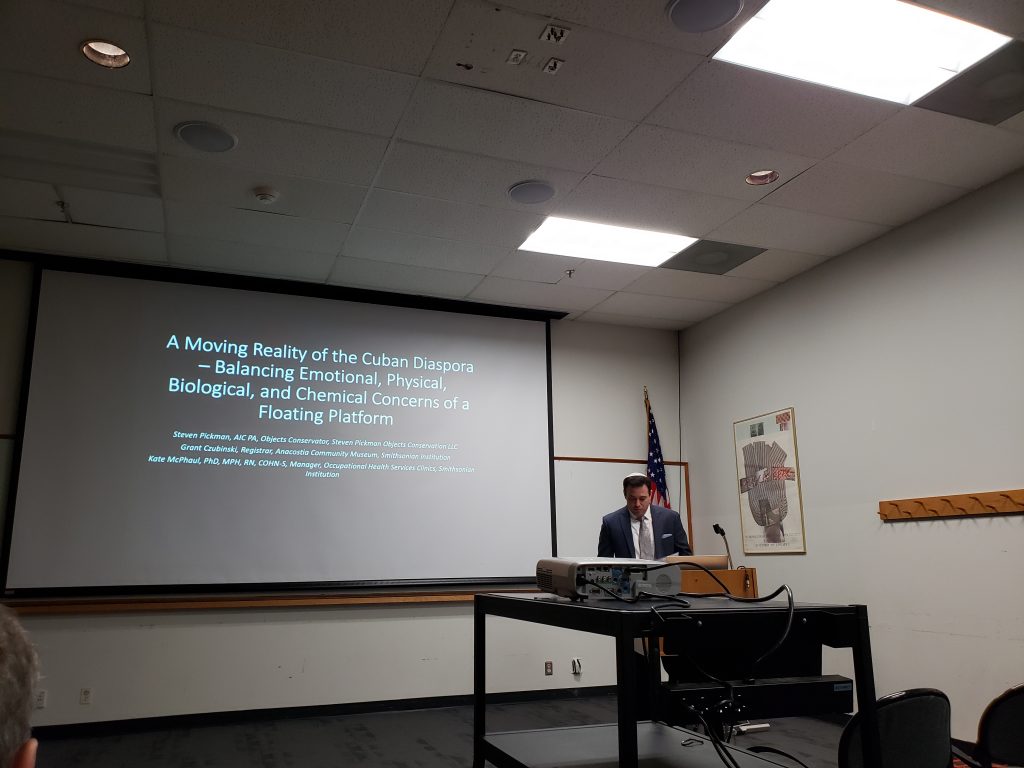Presented by Steven Pickman, Steven Pickman Objects Conservation, L.L.C.
This moving presentation focused on the treatment of a raft used by Cuban balseros, a term referring to those who left Cuba illegally, during the Cuban Diaspora. The raft, which was made from second-hand materials such as polystyrene foam, canvas, and fabric, is a testament to the balseros’ incredible will to live freely.

It is estimated that up to 75% of people who made this journey may have lost their lives in the process.
The raft is housed at the Smithsonian’s Anacostia Community Museum in Washington, DC and upon inspection, faced many condition issues. The main focus of treatment was removal of any hazards, but how to chart a treatment while respecting the object was one of the more sensitive issues. Based on visual examination, various problems such as black mold, fecal matter, and dry mold spores in the textiles were discovered.
Luckily, it was determined that any bodily fluids present on the raft would no longer be a concern after such a long period of time. However, a light cleaning would still need to be performed in order to remove mold spores and other health hazards. Concerns of cleaning solvents which might solubilize raft materials were investigated. In the end, a standard procedure was developed using isopropyl alcohol.
Personal protective equipment was required during treatment due to the health hazards posed by mold spores. The treatment procedure consisted of vacuuming with a HEPA vacuum, followed by three mist applications of dilute isopropyl alcohol, and one final vacuuming session to remove as much of the hazard as possible. The end result preserved as much of the raft and its signs of use as possible, while removing health hazards. This treatment also helped to honor and maintain the story of those who risked death for the chance at a free life.
Summary by:
Austin Anderson, Graduate Intern in Objects Conservation, The Walters Art Museum
S. Dillon Ripley Center, Smithsonian Institution, Washington, DC
9 January 2020